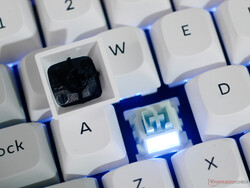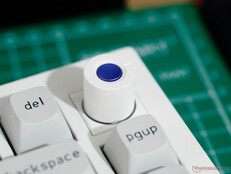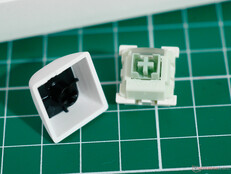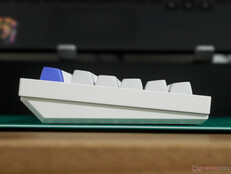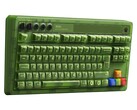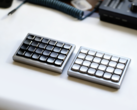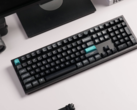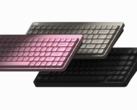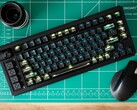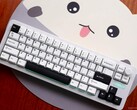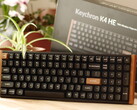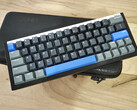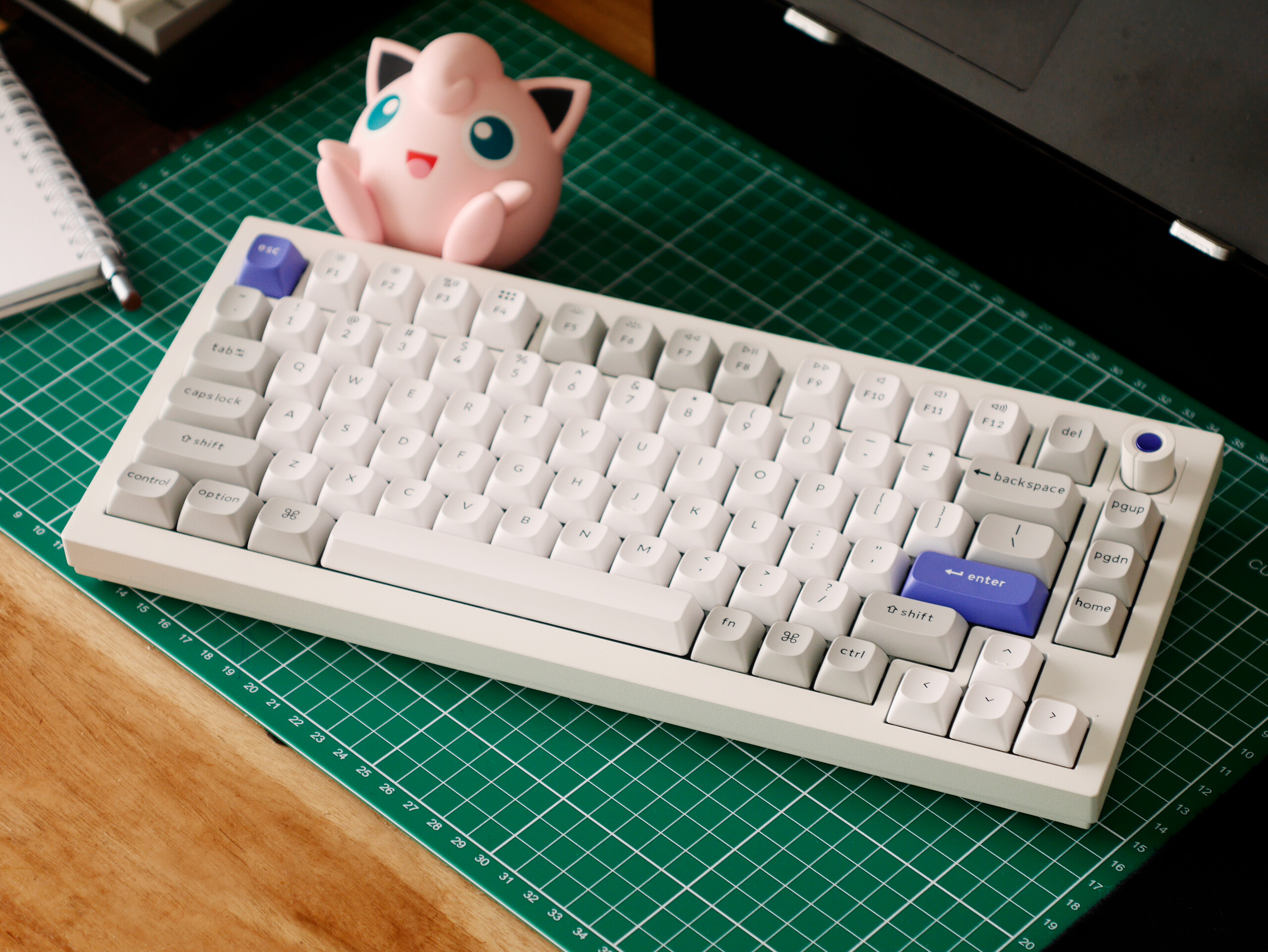
Nailing the basics of an excellent gaming keyboard, wireless be damned: Keychron Q1 HE 8K review
Call it a comeback.
Keychron's return to relevance in the Hall effect gaming keyboard scene is long overdue. While previous Keychron and Lemokey HE keyboards impressed us with build quality, the Q1 HE 8K feels like a return to form for Keychron, delivering that impressive build quality, now backed by universal HE switch compatibility and a superb typing feel. There's only one USB-C cable-shaped problem.Julian van der Merwe Published
Verdict - A long-overdue switch up with a superb typing feel
With the Keychron Q1 HE, Keychron has finally updated its Hall effect gaming keyboard with two much-needed changes — universal North-pole HE switch compatibility and vastly improved stabilisers. If you can ignore the lack of wireless connectivity and the steep price, the Keychron Q1 HE 8K offers impressive typing feedback, build quality, and gaming features that make it competitive with the likes of Wooting, thanks to the matching 8 kHz polling rate.
Keychron Launcher, the software suite used to customise Keychron keyboards, has also been updated just in time for the Q1 HE 8K launch, offering a cleaner UI for the various Hall effect gaming features on offer. Keychron also upgraded the Q1 HE 8K's onboard memory to 1 MB, meaning it can store significantly more macros and customisation options.
The only major complaints we have about the Keychron Q1 HE 8K is that the price is high and that the typing sound is quite high-pitched and doesn't change much when swapping out the switches.
Pros
Cons
Price and availability
The Keychron Q1 HE 8K is available from Keychron directly starting on December 11, 2025, and comes in at $229.99. It is only available with Keychron's Ultra-Fast Magnetic Lime switches and in black and white.
The Keychron Q1 HE 8K is a wired TMR gaming keyboard with OSA profile keycaps, Keychron Ultra-Fast Magnetic Lime switches, and a full aluminium case. It is customisable in the Keychron Launcher web app, and it has an 8 kHz polling rate for ultra-responsive gaming.
Specifications
| Form factor and size | 75% ANSI US layout, 327.53 × 145 mm, 21.3 mm front height |
| Typing angle | 5.26 degrees |
| Case material | Spray-coated aluminium |
| Weight | 1,800 g |
| Plate material and mounting style | Aluminium plate, PORON (polyurethane foam) gasket mount |
| Connectivity | USB-C wired |
| PCB and switch style | TMR PCB, officially compatible with Ultra-Fast Magnetic Lime switches, tested compatible with other North-facing magnetic switches |
| Default switch options | Keychron Ultra-Fast Magnetic Lime switches (linear, 25 gf start force, 48 gf bottom-out, 3.35 mm travel) |
| Keycap material and profile | Double-shot PBT, non-shine-through, OSA profile |
| Customisation | Full remapping, HE features setup, and macro creation through Keychron Launcher |
| Backlight | Per-key south-facing RGB |
| Polling rate | 8 kHz |
| Included accessories | Braided USB-C-to-C cable, USB Type-A dongle, extra macOS modifier keycaps, extra silicone rubber feet, PU gaskets, and case screws, keycap and switch puller |
First impressions, accessories, and build quality
The unboxing experience of the Keychron Q1 HE 8K, similarly to other Keychron keyboards we've reviewed, feels plenty appropriately premium. The included additional macOS keycaps, disassembly tools, and extra gaskets, screws, and feet are a nice addition that invite you to customise your keyboard.
Likewise, the actual keyboard's build quality is also impressively premium. The spray coated aluminium has a consistent finish, and there are no blemishes or build quality issues present in the case itself. The only build quality concern we encountered during our review was that some of the Ultra-Fast Magnetic Lime switches were a little loose in their sockets. None of them popped out, but it was noticeable when removing switches from the keyboard for the sound test portion of this review.
The keycaps are Keychron's typical white-on-black double-shot PBT keycaps in the OSA profile — although, while OSA is meant to be "OEM Spherical Angle," the keycaps have cylindrical tops, not spherical tops. Regardless, they're just as comfortable to use as they were on the Keychron K4 HE we reviewed previously. The Keychron Q1 HE 8K has an adjustable knob with a fresh new design featuring a small purple aluminium plate on the top. The knob is colour-matched to the keyboard case, and the purple metallic accent is slightly darker than the accent keycaps of the same colour.
More concerningly, the texture on the side of the knob makes it a little difficult to grip, especially compared to the knurled knobs on previous Keychron keyboards. That said, the knob is otherwise great to use, and a major convenience feature, especially since it can be programmed to send macros instead of the default volume adjustment.
General use observations
There is no wireless connectivity onboard the Keychron Q1 HE 8K, however, the wired connectivity is, theoretically, more reliable. Additionally, the lack of a battery has allowed Keychron to shave a few millimetres off the front height of the Keychron Q1 HE. The lower front height makes the Q1 HE 8K more comfortable than a lot of other Keychron keyboards, although it doesn't quite reach the 18.3 mm front height of the Keychron C1 Pro 8K we reviewed recently.
One notable difference between the Keychron Q1 HE 8K and seemingly similar Lemokey L1 HE is that the gasket mount on the Q1 HE 8K is a lot more pronounced, with the cushioning effect of the gasket mount being a lot more noticeable here. This is true for both the typing feel and the sound profile, where the gasket mount aids in removing harsh reverberations that would normally transfer from the plate to the case.
8K is marketing, but it's still worth noting that at least you're unlikely to encounter any situations that make you question whether it's your gear holding you back — now, you know it's a skill issue.
Analogue gaming features and software customisation
Aside from the new hardware customisations that Keychron has enabled for the Keychron Q1 HE 8K by using the regular North-pole switch orientation — which means you can replace the switches with better switch options, like the Gateron Magnetic Jade Pro switches (cur. $56 for 70 switches on Amazon) — Keychron allows for extensive customisation via Keychron Launcher. Keychron Launcher has always been one of Keychron's strong points, but the keyboard maker recently updated the UI to add a number of quality of life features that make it the closest contender to Wooting's Wootility in the realm of Hall effect gaming keyboards.
Keychron Launcher allows for customisation of features like actuation distance and rapid trigger — in increments of 0.02 mm — SOCD, DKS, and analogue input, and all of those gaming features worked flawlessly in our review unit of the Keychron Q1 HE 8K. Something of a disappointment, however, was the lack of proper per-key RGB customisation that has been present on other Keychron HE keyboards for a while now. This is likely because the keyboard we tested was still on an early firmware version. We have confirmed that full per-key RGB control will be added in a firmware update at the end of November.
Aside from that missing feature, Keychron Launcher is still an excellent customisation suite, especially given that it doesn't require installing anything and runs entirely in a browser. Launcher also allows for three customisable profiles, with each profile saving a set of actuation distance and analogue input settings and one of those pre-configured for controller emulation. On the Q1 HE 8K, the connectivity switch on other Keychron HE keyboards has been repurposed as a hardware profile switch, which is surprisingly convenient.
Keychron Q1 HE 8K sound profile
The sound profile of the Keychron Q1 HE 8K is quite high-pitch, putting it firmly in the "clacky" territory. Despite swapping the Lime switches out for the new Wooting Lekker Tikken switches, not much changed in terms of sound. How you feel about a specific sound profile is up to you, but it's worth noting that the stabilisers on the Q1 HE 8K are by far the best stabilisers we've tested on any Keychron keyboard.
Except for some minor ticking on the space bar stabiliser, the Keychron Q1 HE 8K's stabilisers are responsive and dead-quiet. It's highly likely that some lubrication or a plumber's tape mod would eliminate the space bar ticking.
Keychron Q1 HE 8K typing sound test
Conclusion
The Keychron Q1 HE 8K delivers impressive build quality and a satisfying typing feel, and Keychron's switch to universal switch compatibility is long overdue. There are other similar Hall effect and TMR gaming keyboards for less, and Keychron's omission of wireless connectivity may be a deal-breaker. While Keychron's macro recording and software customisation suite is top-notch, unless you spend a lot of time customising your keyboard, the Q1 HE 8K may not be worth the $229 price. If you're big on hardware and software customisation, and you want a TMR keyboard with a high polling rate, the Keychron Q1 HE 8K might be exactly what you want.
Transparency
The selection of devices to be reviewed is made by our editorial team. The test sample was given to the author by the manufacturer free of charge for the purposes of review. There was no third-party influence on this review, nor did the manufacturer receive a copy of this review before publication. There was no obligation to publish this review. As an independent media company, Notebookcheck is not subjected to the authority of manufacturers, retailers or publishers.




